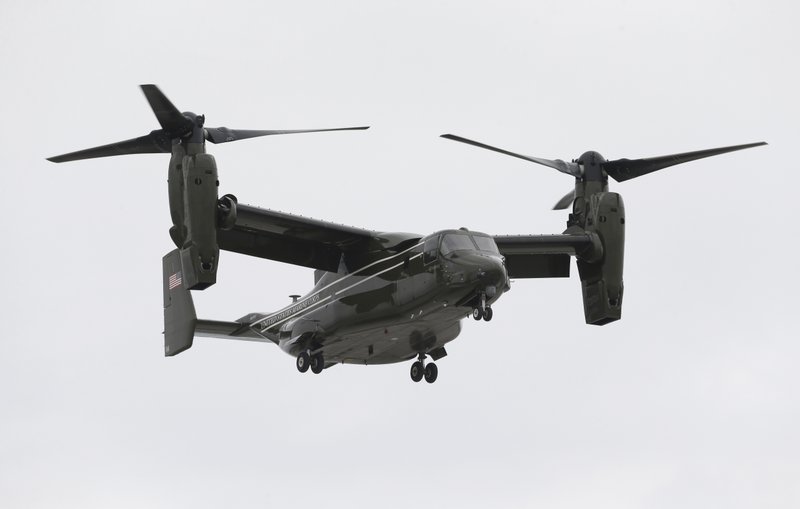SYDNEY -- U.S. military officials have called off a search and rescue operation for three U.S. Marines who were missing after their Osprey aircraft crashed into the sea off the east coast of Australia while trying to land.
The U.S. Navy and Marine Corps suspended the rescue operation and launched a recovery effort instead, the Marine base Camp Butler in Japan said in a statement this morning.
The Marines' next of kin had been notified, and Australia's defense force was assisting the Americans with the recovery effort, the statement said.
Twenty-three of 26 personnel aboard the aircraft were rescued, the Marine base said.
The MV-22 Osprey involved in the mishap had launched from the USS Bonhomme Richard and was conducting regularly scheduled operations when it crashed into the water, the statement said. The ship's small boats and aircraft immediately responded in the search and rescue efforts.
The aircraft was in Australia for a joint military training exercise held by the U.S. and Australia last month in Shoalwater Bay. The Talisman Sabre exercise, a biennial event between the two nations, involved more than 30,000 troops and 200 aircraft.
Australian Defense Minister Marise Payne said Saturday's incident occurred off the coast of Shoalwater Bay in Queensland state and that no Australian personnel were on board.
Payne added that she had briefed Prime Minister Malcolm Turnbull and had spoken with the U.S. defense secretary, Jim Mattis, "to offer Australia's support in any way that can be of assistance."
The Osprey is a tilt-rotor aircraft that can land and take off without a runway, like a helicopter, and cruise like an airplane while in flight. First developed during the 1980s, it got off to a rocky start over safety concerns and a series of high-profile crashes. One crash in Arizona in 2000 killed all 19 Marines on board.
"It had a very difficult development period," said Richard Aboulafia, an aircraft consultant and analyst with Teal Group, an aerospace and defense consultancy.
But he added that no other aircraft has the Osprey's unique capabilities, and it has proved its worth on battlefields, including in Iraq and Afghanistan.
"As it matured, it went well into the safe zone," Aboulafia said.
The Osprey that crashed on Saturday belonged to the Marine Medium Tiltrotor Squadron 265 -- nicknamed the Dragons -- which is part of the 31st Marine Expeditionary Unit based in Okinawa, Japan.
In 2015, a U.S. Osprey crashed during a training exercise in Hawaii, killing two Marines.
Another Osprey crashed in December off the coast of Okinawa. There were no fatalities, but Ospreys were grounded for a week in Japan. In the past, some residents of Okinawa who were opposed to the U.S. military base there have seized on the Osprey as a symbol of the Americans' presence.
Last month, a Marine Corps transport plane crashed in Mississippi and killed 16 service members. Brig. Gen. Bradley James, commander of the Fourth Marine Aircraft Wing, Marine Forces Reserve, said "something went wrong at cruise altitude."
The episodes have exacerbated concerns that budget cuts have led to a lack of maintenance, and a decline in mission readiness, for U.S. military aircraft.
Information for this article was contributed by staff members of The Associated Press and by Jacey Fortin and Peter Baker of The New York Times.
A Section on 08/06/2017
